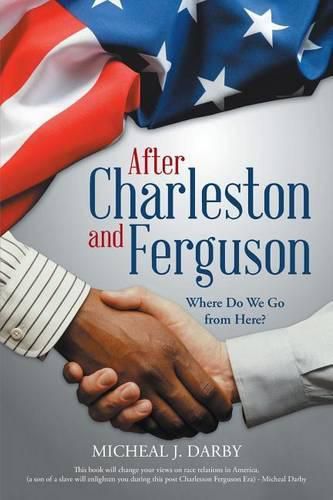Readings Newsletter
Become a Readings Member to make your shopping experience even easier.
Sign in or sign up for free!
You’re not far away from qualifying for FREE standard shipping within Australia
You’ve qualified for FREE standard shipping within Australia
The cart is loading…






This title is printed to order. This book may have been self-published. If so, we cannot guarantee the quality of the content. In the main most books will have gone through the editing process however some may not. We therefore suggest that you be aware of this before ordering this book. If in doubt check either the author or publisher’s details as we are unable to accept any returns unless they are faulty. Please contact us if you have any questions.
Despite the great strides made for social justice during the civil rights movement in the 1960s some of the most jarring national events of the early twenty-first century have been symptomatic of a deep-seated racial strife in America. The killing of nine African American church members in Charleston, South Carolina and the shooting of Michael Brown in Ferguson Missouri, and the killing of unarmed black males in Chicago and other cities, along with the slaying of law enforcement officers in Dallas and Baton Rouge seem to suggest that major institutions such as the family, the church, the media, the criminal justice system and the public schools need to constantly address the problem of racism until there are positive ongoing changes.
After Charleston and Ferguson -Where Do We Go from Here? Presents over twenty reasons why racial strife exists; along with a host of strategies to overcome racial and cultural challenges in a post -Charleston and Ferguson era. A detailed civil rights and a black history timeline is discussed as information for those who desire to learn about America’s racial and cultural past.
The author also makes a passionate appeal for an Annual Brotherhood and Race Conciliation holiday where workers are given a day off to honor the importance of love and brotherhood among those of different races, colors and creeds; it is believed that more credence will be given to a National Brotherhood holiday where no person’s name is mentioned in connection with the day.
$9.00 standard shipping within Australia
FREE standard shipping within Australia for orders over $100.00
Express & International shipping calculated at checkout
This title is printed to order. This book may have been self-published. If so, we cannot guarantee the quality of the content. In the main most books will have gone through the editing process however some may not. We therefore suggest that you be aware of this before ordering this book. If in doubt check either the author or publisher’s details as we are unable to accept any returns unless they are faulty. Please contact us if you have any questions.
Despite the great strides made for social justice during the civil rights movement in the 1960s some of the most jarring national events of the early twenty-first century have been symptomatic of a deep-seated racial strife in America. The killing of nine African American church members in Charleston, South Carolina and the shooting of Michael Brown in Ferguson Missouri, and the killing of unarmed black males in Chicago and other cities, along with the slaying of law enforcement officers in Dallas and Baton Rouge seem to suggest that major institutions such as the family, the church, the media, the criminal justice system and the public schools need to constantly address the problem of racism until there are positive ongoing changes.
After Charleston and Ferguson -Where Do We Go from Here? Presents over twenty reasons why racial strife exists; along with a host of strategies to overcome racial and cultural challenges in a post -Charleston and Ferguson era. A detailed civil rights and a black history timeline is discussed as information for those who desire to learn about America’s racial and cultural past.
The author also makes a passionate appeal for an Annual Brotherhood and Race Conciliation holiday where workers are given a day off to honor the importance of love and brotherhood among those of different races, colors and creeds; it is believed that more credence will be given to a National Brotherhood holiday where no person’s name is mentioned in connection with the day.